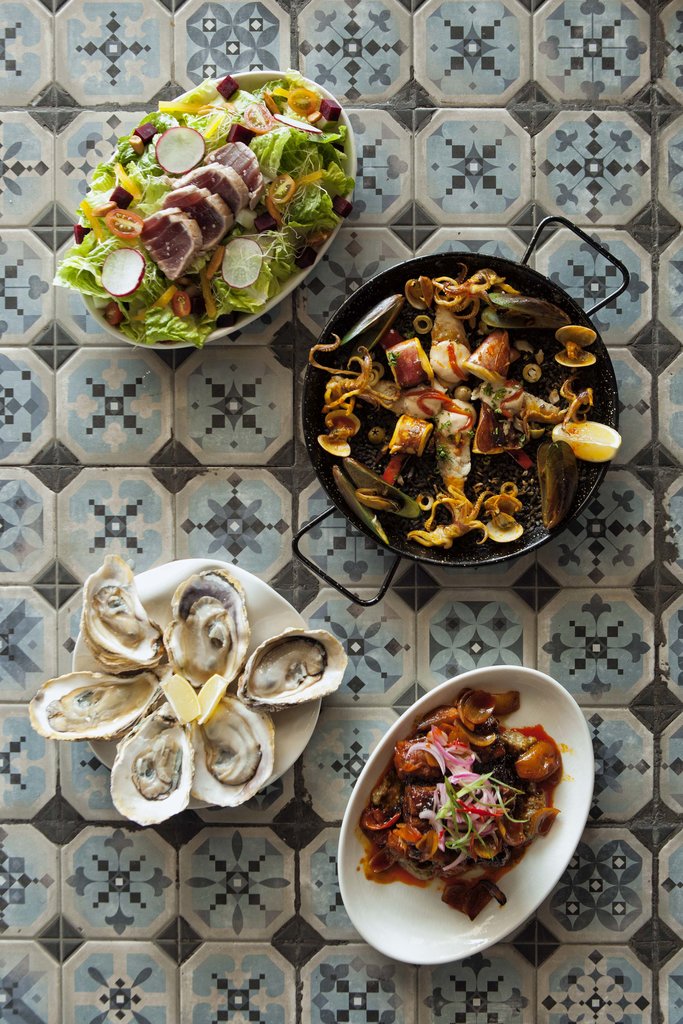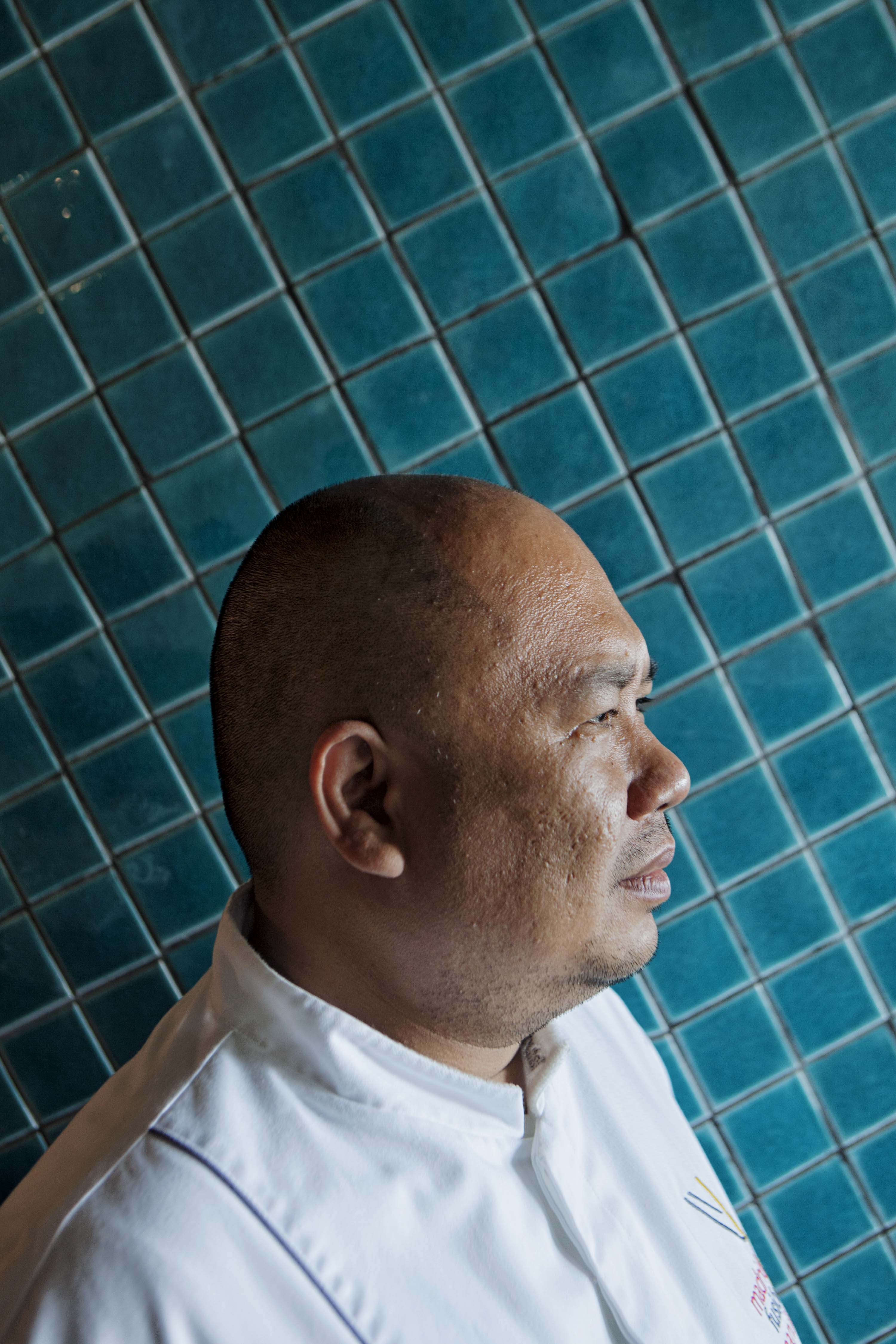“When I was five or six years old, I was already hanging out in the kitchen,” chef Myke “Tatung” Sarthou recalls. “[Most of the time,] I was removing malunggay leaves from the stems or snapping o the ends of string beans.”
Raised in a Bisaya-Tagalog household during the era of “Tupperware parties,” Sarthou has always been passionate about Filipino food. From his signature burnt coconut to his renditions of Mindanao dishes—“We Filipinos have been disregarding those for the longest time”—he keeps the food he cooks grounded in heritage.
How will modern Filipino cuisine evolve?
Filipino food can really evolve [further] if we continue to interact with each other: the chefs and anybody else who eats. We could have a deeper discussion on, for example, the issue of rice. It will develop if we continue to find ways. Let’s not be caught up with recipes; let’s be more concerned about sustainability. Can we afford to eat this [on a regular basis]? We’re looking [at] the end product, but cuisine and gastronomy are connected.
[one_half padding=”0 5px 0 5px”]

[one_half_last padding=”0 5px 0 5px”]

It’s also really about embracing the state of affairs in the Philippines. When you say modern Filipino, it’s not necessarily all about the technique, [but] it’s about what’s available to Filipinos. We’ve seen some developments in terms of agriculture. A lot of ingredients, which weren’t available at a certain point of time, are now being grown here, like kale and French beans.
I think modern Filipino chefs are having the sensitivity to prepare and create Filipino food in the context of what would serve this country well. Let us not stop innovating because, ultimately, we should be able to create and be able to eat. It’s not just about creativity, but also about sensitivity and responsibility. Are we choosing sustainable and accessible ingredients?
“Filipino food can really evolve [further] if we continue to interact with each other… Let’s not be caught up with recipes; let’s be more concerned about sustainability.”
And what are those ingredients?
It’s really going back to our land and seas because no matter how you prepare food, it should stay true to the environment. Food should be central in our relationships, and food should represent our environment. If you keep those values intact, it can somehow change forms. I have strong roots in heritage and culture, but I still want to push the discourse further because that’s how we keep ourselves relevant.
Aside from working in the kitchen, you also share your knowledge through cookbooks. Can you tell us more about your latest one?
I just released a book, and I’m finishing another one right now. It’s called Rice to the Occasion, which features rice recipes that kids can do. I’m promoting local rice. Part of heritage is a real interaction [between] ingredients. Rice is an accessible and versatile ingredient, so [the book] is about continuously elevating your craft [even when] you’re cooking something that’s simple. When you cook, you should strive to make a masterpiece. The next book I’m [producing] is something for housewives. I’m trying to introduce ideas of sustainability, like how they can introduce local ingredients into their recipes.
This story was originally published in Northern Living, June 2017.











































